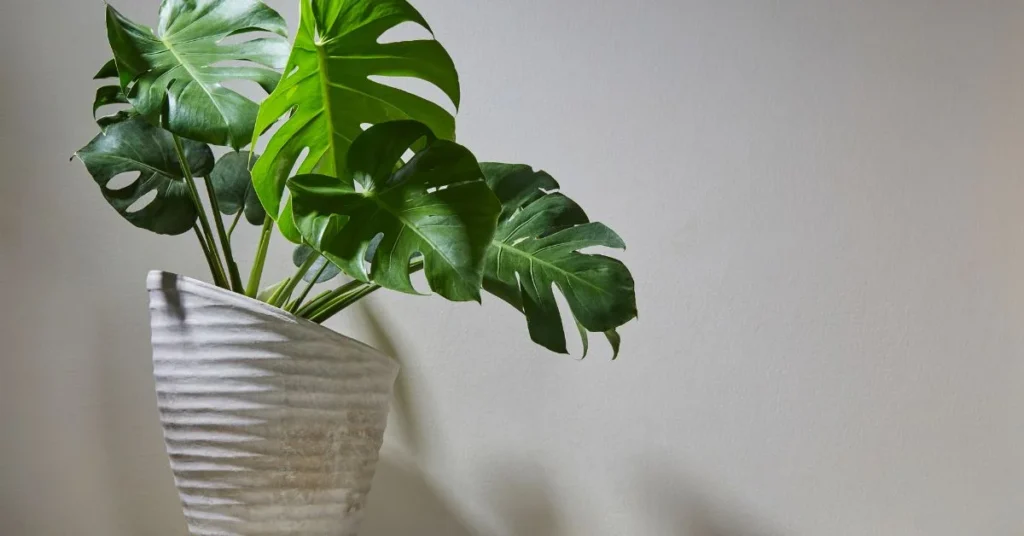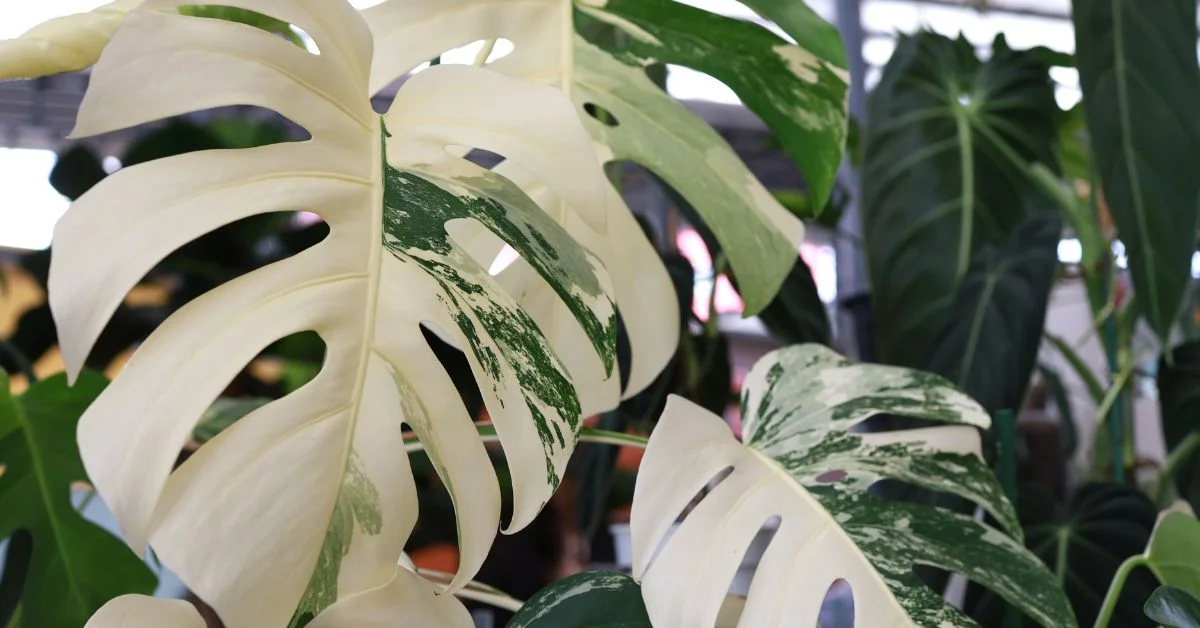Monstera Albo is a tropical beauty with beautiful white variegation, making it a highly desirable houseplant. However, its allure isn’t superficial; it calls for meticulous nurturing. If you want to grow Monstera Albo in the comfort of your own home, this book will show you the ropes, from propagation and potting to care and typical problems.
What Is Monstera Albo?
Rare and beautiful, Monstera Albo (or Monstera deliciosa ‘Albo-Variegata’) is a variegated variety of the renowned Monstera plant. The stunning contrast between the white marbled spots and the verdant foliage is what gives this plant its distinctive beauty.
Why It’s So Popular:
- Unique white variegation
- Large, fenestrated (split) leaves
- Rare and in-demand among plant collectors
Monstera Albo vs. Other Monsteras
There are several Monstera varieties, but the Albo stands out for its unpredictable and beautiful variegation.
Here’s a quick side-by-side to help you differentiate:
| Feature | Monstera Albo | Monstera Thai Constellation | Monstera Deliciosa |
|---|---|---|---|
| Variegation | White, random patches | Creamy speckles & sectors | No variegation (fully green) |
| Rarity | High | Moderate | Low |
| Leaf Size | Medium to large | Large | Large |
| Price Range | $150–$800+ | $200–$600 | $30–$80 |
Ideal Growing Conditions
To thrive, Monstera Albo needs a delicate balance of light, humidity, and soil conditions.
Light:
Bright, indirect light is essential. Too much direct sun can scorch the white areas.
Soil:
Use a well-draining mix:
- 40% potting soil
- 30% perlite
- 20% orchid bark
- 10% activated charcoal
Humidity:
Keep humidity levels between 60-80% for optimal health.
Temperature:
Maintain a range of 65°F to 85°F (18°C to 29°C). Avoid cold drafts.

Watering and Feeding Schedule
Watering:
- Water when the top 2 inches of soil are dry.
- Avoid overwatering, which can lead to root rot.
Fertilizing:
- Use a balanced liquid fertilizer every 4-6 weeks during spring and summer.
- Hold off in winter when growth slows.
Pro Tip: Always use filtered or rainwater to prevent mineral buildup.
Propagation Tips
Propagating Monstera Albo can be rewarding but requires patience.
Steps for Stem Cutting Propagation:
- Choose a healthy stem with at least one node and a variegated leaf.
- Use sterile shears to make a clean cut.
- Place in water or moist sphagnum moss.
- Keep in bright, indirect light and change the water weekly if using a vase.
- Wait 4–6 weeks for roots to grow before potting.
Common Problems and Solutions
Even experienced growers can face challenges with Monstera Albo.
| Problem | Symptoms | Solution |
| Root rot | Mushy roots, yellowing leaves | Reduce watering, repot in dry soil |
| Low humidity | Crispy leaf edges | Use a humidifier or pebble tray |
| Sunburn | Brown patches | Move plant to filtered light |
| Pests (spider mites, thrips) | Webbing, tiny insects | Use neem oil or insecticidal soap |
Where to Buy Monstera Albo
Because of its rarity, finding a healthy Monstera Albo can be tricky.
Top Sources:
- Specialty plant shops
- Online marketplaces like Etsy, eBay, and Facebook groups
- Reputable plant nurseries with variegated collections
Buying Tips:
- Request close-up photos before purchasing
- Avoid overly white cuttings—they may lack chlorophyll to sustain growth
Conclusion
An indoor jungle would be incomplete without Monstera Albo, which is more than simply a plant. You can appreciate the lush greenery and one-of-a-kind allure of this tropical wonder with the correct circumstances and some perseverance.
FAQs
1. Why is Monstera Albo so expensive?
Because it’s rare, slow to propagate, and in high demand among collectors.
2. How do I increase variegation in my Monstera- Albo?
Provide plenty of indirect sunlight. However, genetics ultimately determine variegation levels.
3. Can Monstera- Albo revert to green?
Yes, if it lacks light or the variegated sections aren’t maintained, it may grow solid green leaves.
4. How fast does Monstera Albo grow?
It grows slower than the standard Monstera due to reduced chlorophyll in its leaves.
5. Is Monstera Albo toxic to pets?
Yes, it contains calcium oxalates, which are toxic to cats and dogs if ingested.
For more information, click here.









